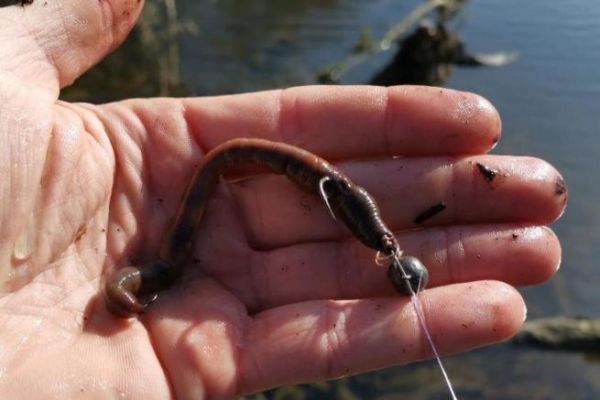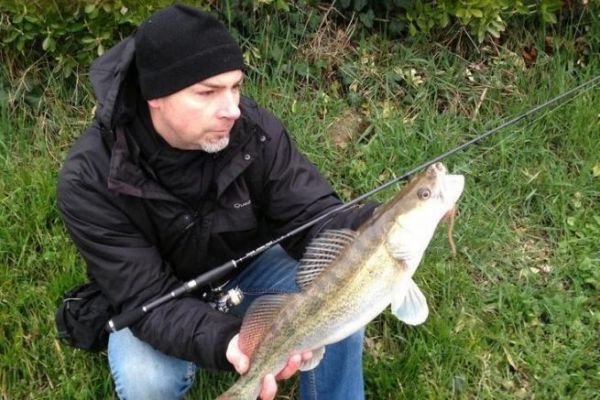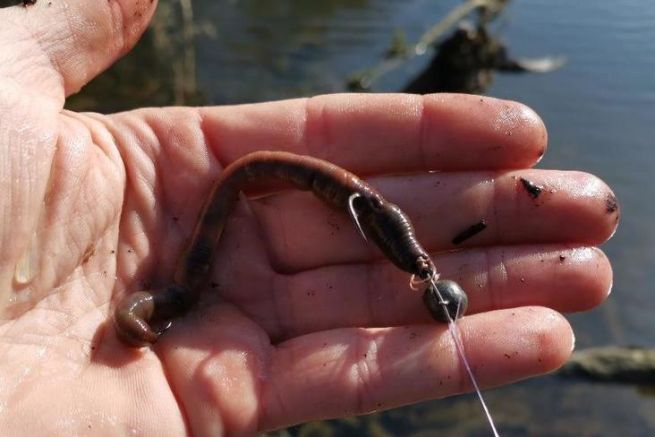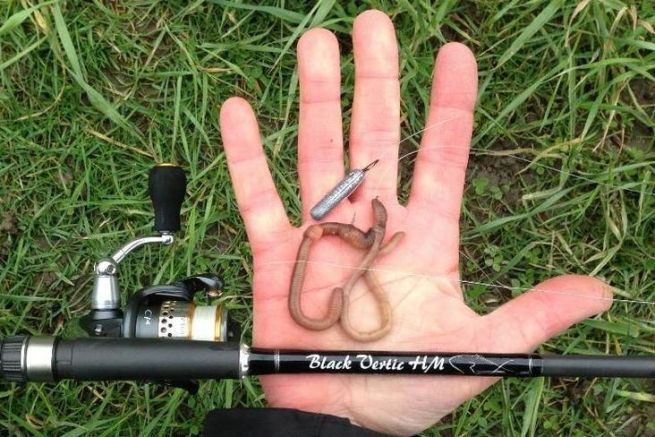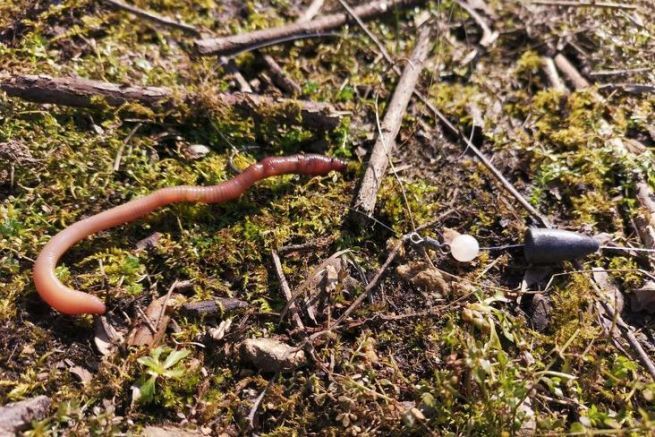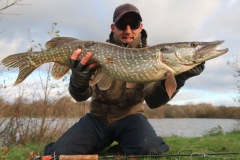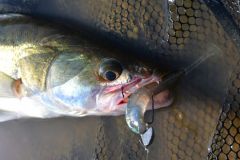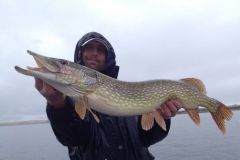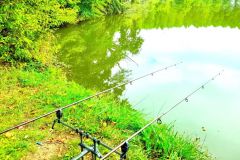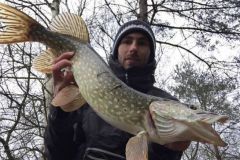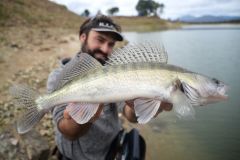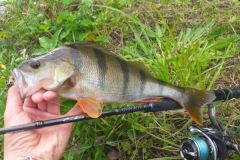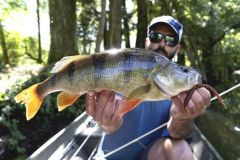The way in which you decide to eschew a worm is vital not only for its presentation, but also for its durability. Indeed, worms are fragile and if not properly fished, will not withstand more or less forceful throws and will tear at the slightest touch.
If in the absolute, it would be possible to hook a bunch of worms on a simple lead head, here's the rig I use and how to make it.
What you need
- Eye hooks in sizes 1 or 2 and 6 or 8, depending on references
- Staples
- Buckshot in various sizes
- A spool of fine braid
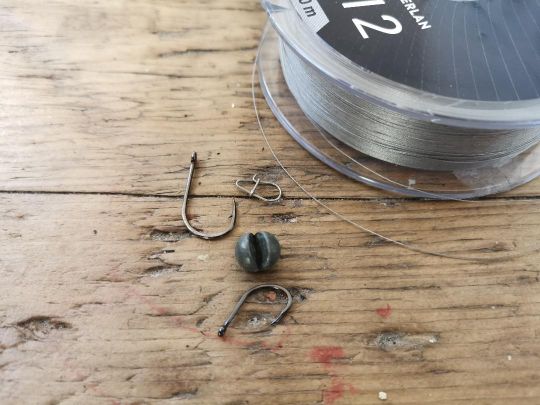
Step 1
Start by sliding the staple through the eye of the size 2 hook.
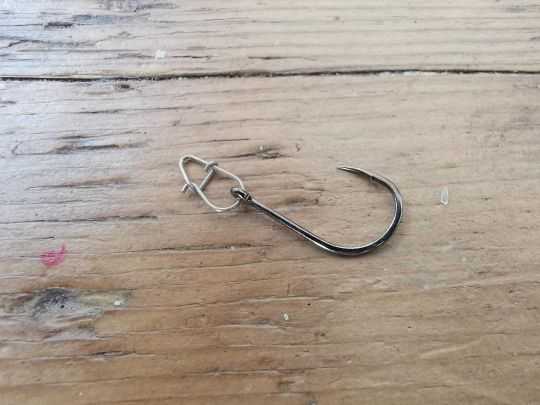
Step 2
Pinch a piece of buckshot (size to be chosen according to the spots fished) onto the staple, making sure that the most important part is positioned opposite the hook point. By pinching the hook in this way, the center of gravity of your rig will be shifted to one side, giving a perfect presentation and keeping your hook permanently oriented upwards, thus limiting snagging.
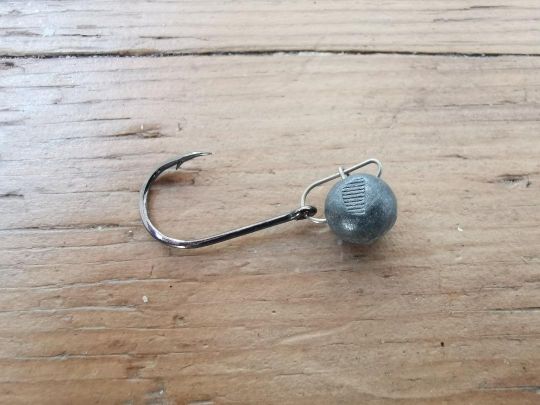
Step 3
Make a braided stack to which you connect your size 6 (or 8) hook. A simple loop of about ten centimetres is sufficient.
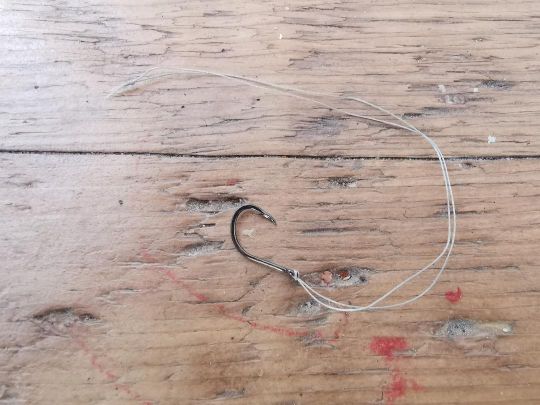
Step 4
Connect your stack to your frame's clip using the "loop-in-loop" operation, and your frame is complete.
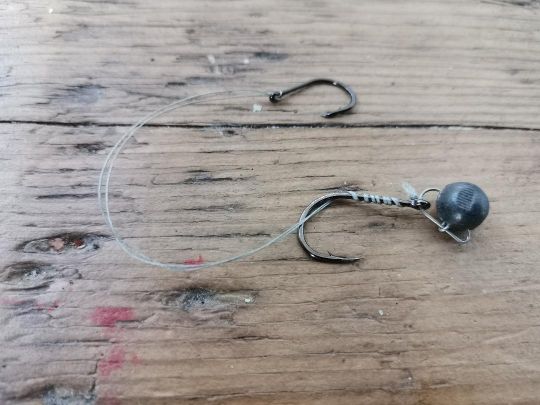
How to bait your worm?
To perfectly eschew your worm on its mount, you need a worm needle.
- Start by sliding the worm onto the needle (if your worms are too small, you can use several).
- Then slide it over the hook and down the length of the stack.
- If the stack is too long, you can wrap it around the shank of the head hook.
- Finally, place your worm's head on the top hook.
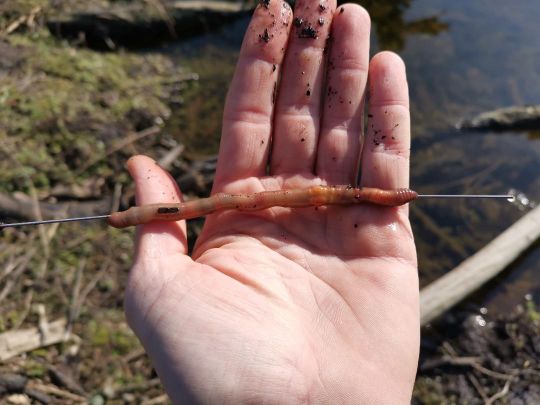
Which way should you aim your worm?
In absolute terms, the worm's direction of presentation is not fundamentally important when deciding on a fish, but it is a determining factor in your worm's behaviour. The head of the worm (the dark, pointed side) is much harder than the tail (the flat side). So it's important to mount your worm head-up, to sink the main hook into the head so that it holds as long as possible on your rig.

 /
/ 